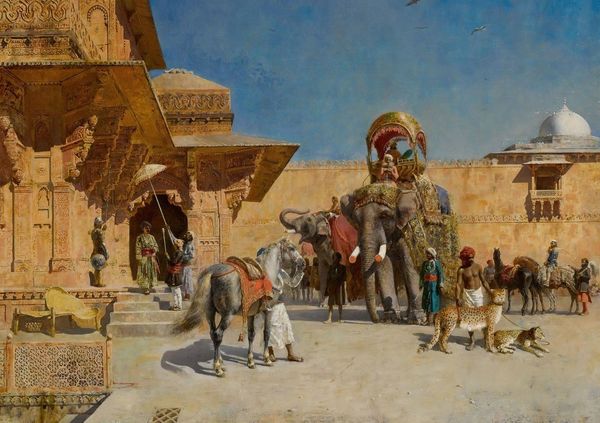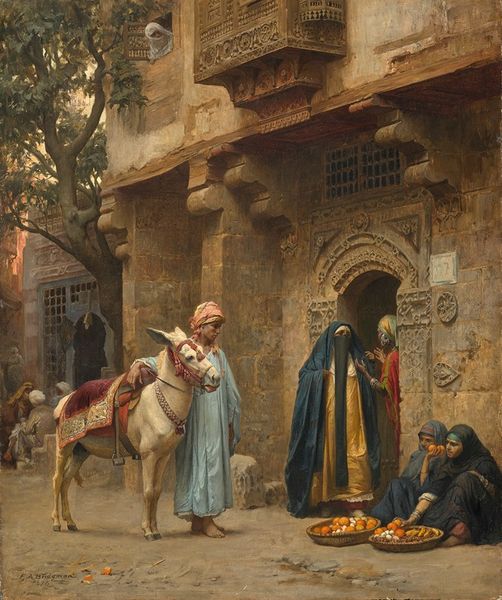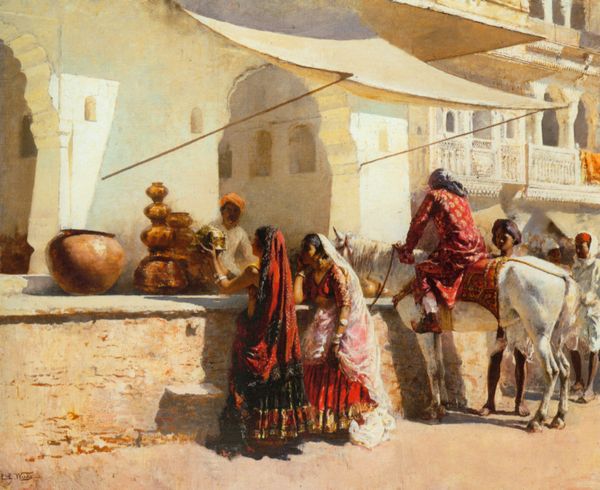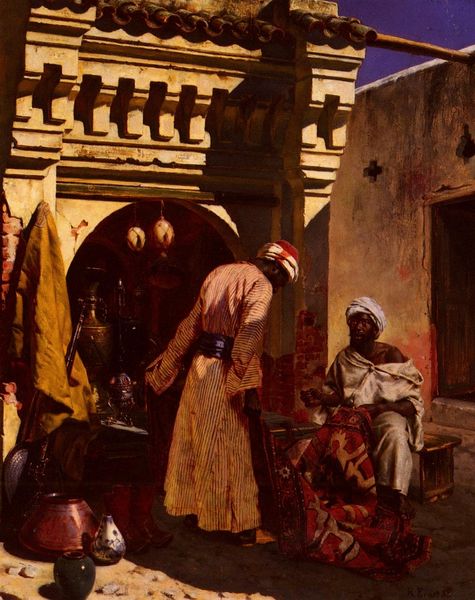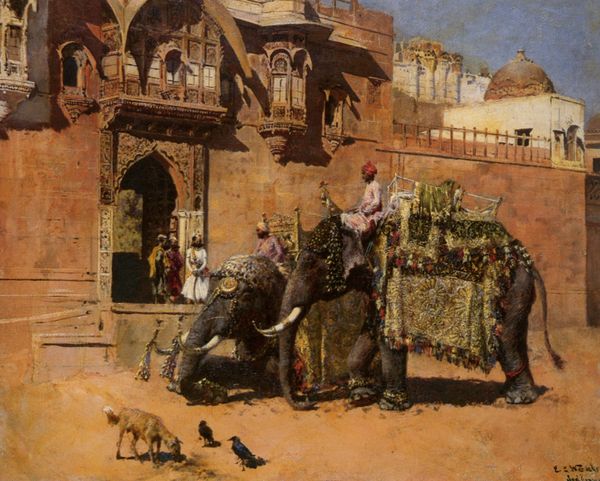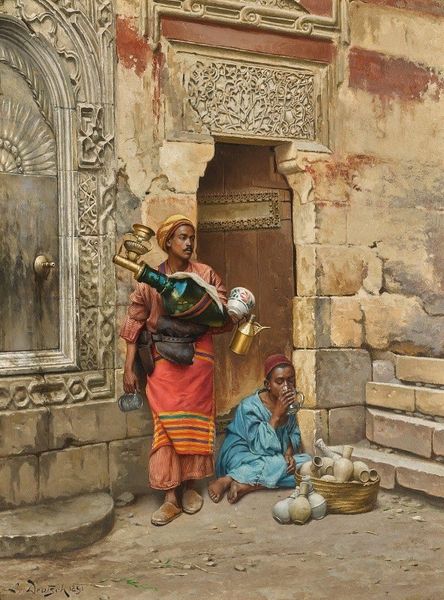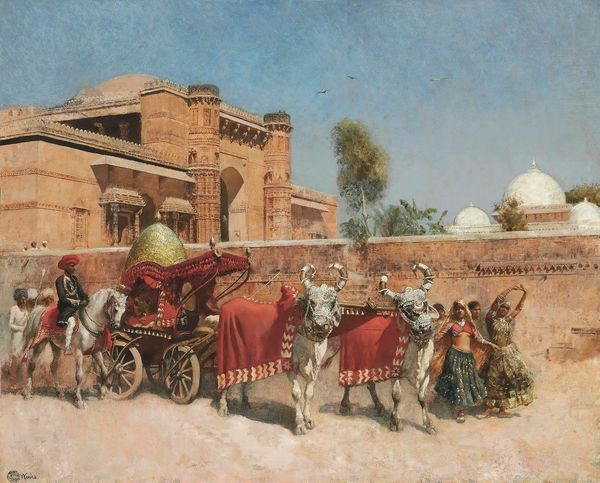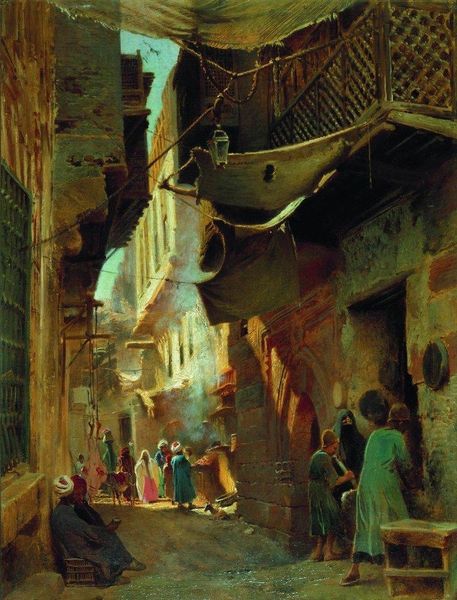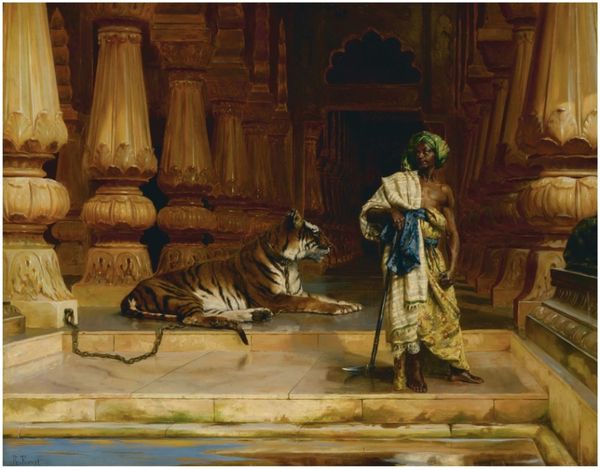
painting, oil-paint
#
portrait
#
figurative
#
painting
#
oil-paint
#
landscape
#
orientalism
#
genre-painting
#
academic-art
Copyright: Public Domain: Artvee
Curator: This oil painting presents an intimate genre scene titled "The Camel Driver", crafted by Jean-Léon Gérôme. Editor: My first thought is stillness. Everything feels poised and observant, despite the relatively mundane activity. It's like a captured moment pregnant with unstated narratives. Curator: Gérôme was a leading figure in the Academic art movement and famous for his Orientalist works. Considering the socio-political backdrop, the painting undoubtedly catered to European fascinations with the 'exotic' East, shaping perceptions through careful staging. Editor: Precisely. You see that rendered in the fine details of the architecture and in the texture of the camel's coarse hair. Note how that technical proficiency emphasizes a certain vision, almost constructing a reality from carefully selected material facts. How was this piece received, displayed? Curator: As with many works classified as Orientalist, the reception was complex, deeply interwoven with colonialism and the construction of "otherness." His work was hugely popular, allowing the European art consumer entry into a fantasy. These pieces often featured prominently in popular exhibitions, further cementing particular views of the East. Editor: Right. So the consumption of the image is critical, not just its creation. And the labor, you have to consider the unseen labor required not only in the production of the piece, mixing pigments grinding them, setting the easel, but in setting up these views of other places. What type of cultural work is at play, what type of person consumed this work and how. Curator: This is key. The painting doesn’t just depict; it participates in a dialogue about power, representation, and the consumption of cultures, particularly when viewed through the lens of our modern understanding of postcolonialism. Editor: Absolutely. Looking back, we see the artist's hand, yes, but we must also see the social mechanisms that enabled, promoted, and continue to frame pieces like “The Camel Driver”. Curator: Understanding this interplay allows us to consider the layers of context embedded in the image before us. Editor: Indeed, and perhaps reconsider our own contemporary consumption of such representations.
Comments
No comments
Be the first to comment and join the conversation on the ultimate creative platform.
